Francesc J. Ferri
A Data-Driven Exploration of Elevation Cues in HRTFs: An Explainable AI Perspective Across Multiple Datasets
Mar 14, 2025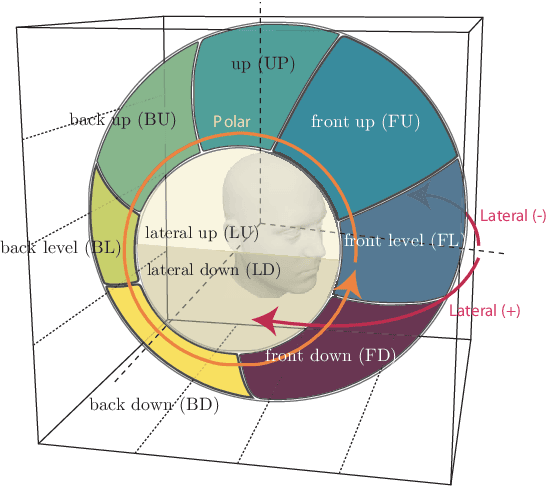
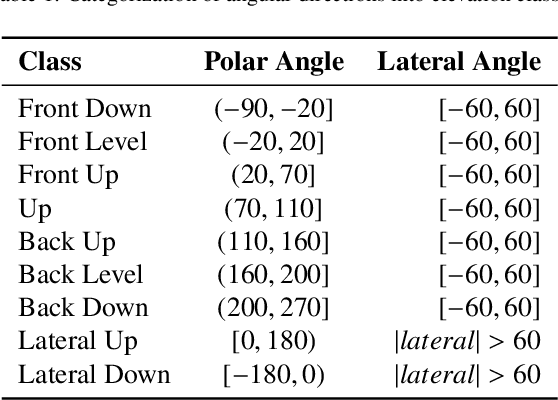

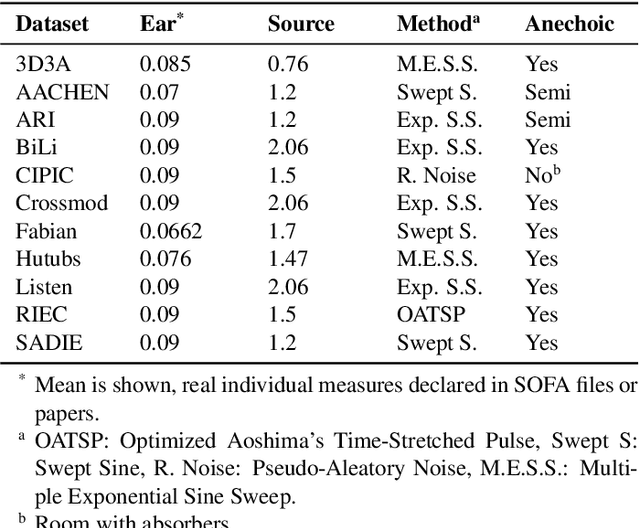
Abstract:Precise elevation perception in binaural audio remains a challenge, despite extensive research on head-related transfer functions (HRTFs) and spectral cues. While prior studies have advanced our understanding of sound localization cues, the interplay between spectral features and elevation perception is still not fully understood. This paper presents a comprehensive analysis of over 600 subjects from 11 diverse public HRTF datasets, employing a convolutional neural network (CNN) model combined with explainable artificial intelligence (XAI) techniques to investigate elevation cues. In addition to testing various HRTF pre-processing methods, we focus on both within-dataset and inter-dataset generalization and explainability, assessing the model's robustness across different HRTF variations stemming from subjects and measurement setups. By leveraging class activation mapping (CAM) saliency maps, we identify key frequency bands that may contribute to elevation perception, providing deeper insights into the spectral features that drive elevation-specific classification. This study offers new perspectives on HRTF modeling and elevation perception by analyzing diverse datasets and pre-processing techniques, expanding our understanding of these cues across a wide range of conditions.
Task 1A DCASE 2021: Acoustic Scene Classification with mismatch-devices using squeeze-excitation technique and low-complexity constraint
Jul 30, 2021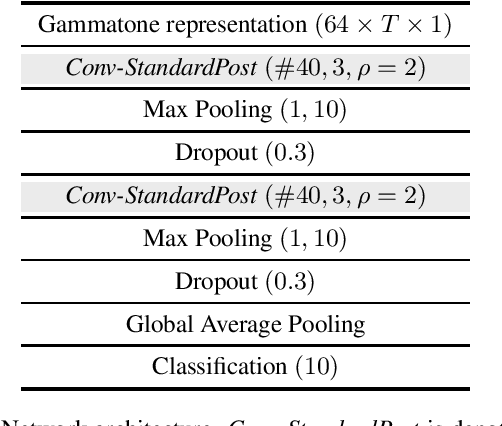

Abstract:Acoustic scene classification (ASC) is one of the most popular problems in the field of machine listening. The objective of this problem is to classify an audio clip into one of the predefined scenes using only the audio data. This problem has considerably progressed over the years in the different editions of DCASE. It usually has several subtasks that allow to tackle this problem with different approaches. The subtask presented in this report corresponds to a ASC problem that is constrained by the complexity of the model as well as having audio recorded from different devices, known as mismatch devices (real and simulated). The work presented in this report follows the research line carried out by the team in previous years. Specifically, a system based on two steps is proposed: a two-dimensional representation of the audio using the Gamamtone filter bank and a convolutional neural network using squeeze-excitation techniques. The presented system outperforms the baseline by about 17 percentage points.
TASK3 DCASE2021 Challenge: Sound event localization and detection using squeeze-excitation residual CNNs
Jul 30, 2021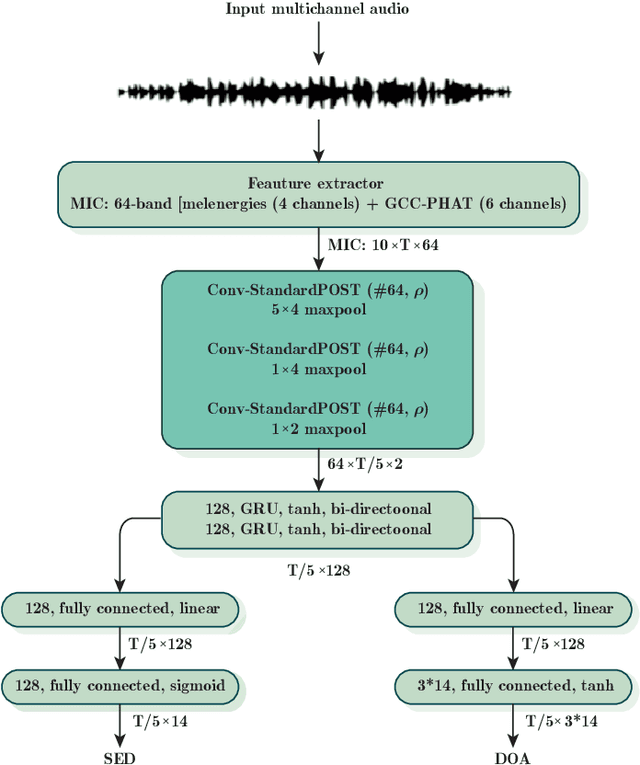
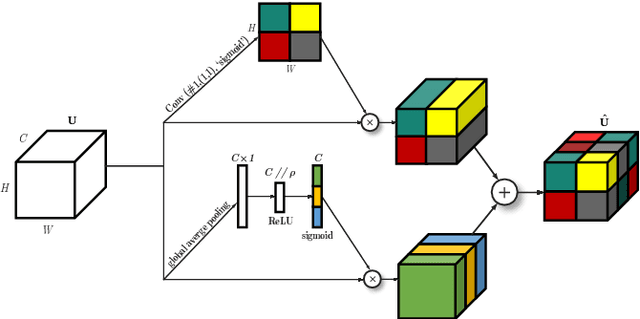
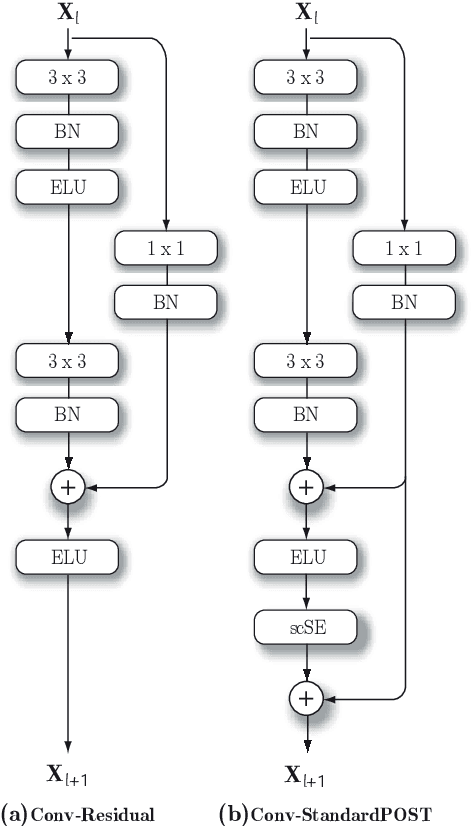
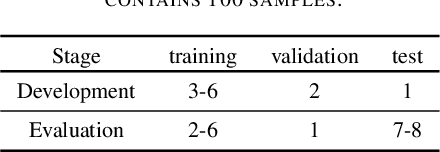
Abstract:Sound event localisation and detection (SELD) is a problem in the field of automatic listening that aims at the temporal detection and localisation (direction of arrival estimation) of sound events within an audio clip, usually of long duration. Due to the amount of data present in the datasets related to this problem, solutions based on deep learning have positioned themselves at the top of the state of the art. Most solutions are based on 2D representations of the audio (different spectrograms) that are processed by a convolutional-recurrent network. The motivation of this submission is to study the squeeze-excitation technique in the convolutional part of the network and how it improves the performance of the system. This study is based on the one carried out by the same team last year. This year, it has been decided to study how this technique improves each of the datasets (last year only the MIC dataset was studied). This modification shows an improvement in the performance of the system compared to the baseline using MIC dataset.
Squeeze-Excitation Convolutional Recurrent Neural Networks for Audio-Visual Scene Classification
Jul 28, 2021

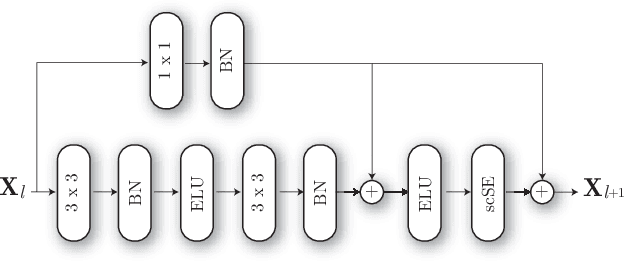

Abstract:The use of multiple and semantically correlated sources can provide complementary information to each other that may not be evident when working with individual modalities on their own. In this context, multi-modal models can help producing more accurate and robust predictions in machine learning tasks where audio-visual data is available. This paper presents a multi-modal model for automatic scene classification that exploits simultaneously auditory and visual information. The proposed approach makes use of two separate networks which are respectively trained in isolation on audio and visual data, so that each network specializes in a given modality. The visual subnetwork is a pre-trained VGG16 model followed by a bidiretional recurrent layer, while the residual audio subnetwork is based on stacked squeeze-excitation convolutional blocks trained from scratch. After training each subnetwork, the fusion of information from the audio and visual streams is performed at two different stages. The early fusion stage combines features resulting from the last convolutional block of the respective subnetworks at different time steps to feed a bidirectional recurrent structure. The late fusion stage combines the output of the early fusion stage with the independent predictions provided by the two subnetworks, resulting in the final prediction. We evaluate the method using the recently published TAU Audio-Visual Urban Scenes 2021, which contains synchronized audio and video recordings from 12 European cities in 10 different scene classes. The proposed model has been shown to provide an excellent trade-off between prediction performance (86.5%) and system complexity (15M parameters) in the evaluation results of the DCASE 2021 Challenge.
 Add to Chrome
Add to Chrome Add to Firefox
Add to Firefox Add to Edge
Add to Edge